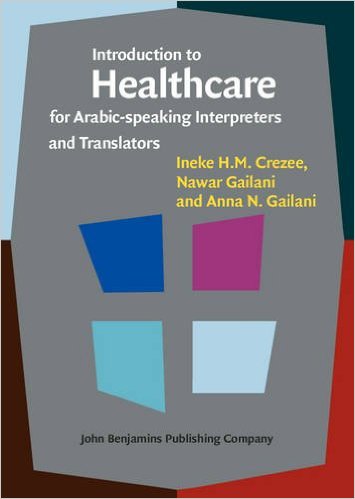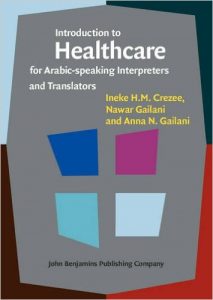Introduction to Healthcare for Arabic-speaking Interpreters and Translators


[amazon template=iframe image2&asin=9027212465]
Arabic is a language of substantial cultural and religious importance. It is spoken by about 300 million people, predominantly in the 22 countries of the Arab world, as well as in several other regions where the Arab diaspora has settled. Arabic is also the language of Islam and underpins the religious practice of about 1.5 billion Muslims worldwide.
In view of the above, the authors thought it important to create an easily accessible handbook for interpreters, translators, educators and other practitioners working between Arabic and English in healthcare settings. Introduction to Healthcare for Arabic-speaking Interpreters and Translators follows the seminal publication Introduction to Healthcare for Interpreters and Translators (Crezee, 2013) and has been supplemented with Arabic glossaries and comments about health communication between Anglophones and Arabic speakers. This practical resource book will help inform interpreters and translators about healthcare settings, anatomy, physiology, medical terminology and frequently encountered conditions, diagnostic tests and treatment options.
Arabic is divided into two categories: formal (Classical, Standard or literary) Arabic, and local dialects (colloquial Arabic). Formal Arabic is the official language of all Arab countries. In each of these, there are regional dialects which color formal Arabic and add character to a poetic and expressive language. Poetic nature is found in many daily expressions, and not only in Arabic literature, for example, “Good morning” in Arabic is “Ssabah al khair”, which in essence wishes others a morning of goodness; and, the pan-Arab greeting “Salam Alaykum”, which literally means “may peace be upon you”. Dialects once existed principally in spoken form but these days they are increasingly used in writing in social media and its paraphernalia (mobile phones, tablets, etc.). In this book, formal Arabic is used in the glossaries, simply because it is the recognized language of literacy across the Arabic-speaking world.
DOWNLOAD THIS BOOK FREE HERE
DISCLAIMER
This website strictly complies with DMCA Digital Copyright Laws..
Please be clear that we (emedicalbooks.com) do not own copyrights of these e-books. The intention behind sharing these books and educational material is to provide easy access to medical students, doctors and other individuals related to the field of medical science, "thus only for educational purpose". We highly encourage our readers to purchase this content from the respected publishers. If anyone holding copyrights wants us to remove this content, please contact us rightaway. All books and educational material on emedicalbooks.com are free and NOT HOSTED ON OUR WEBSITE. If you feel that your copyrights have been violated, then please contact us immediately. You may send an email to emedical1521@gmail.com for all DMCA / Removal Requests. emedicalbooks.com doesn’t have any material hosted on the server of this page, only links to books that are taken from other sites on the web are published and these links are unrelated to the book server. emedicalbooks.com server doesnot store any type of book or material. No illegal copies are made or any copyright © and / or copyright is damaged or infringed since all material is free on the internet.







